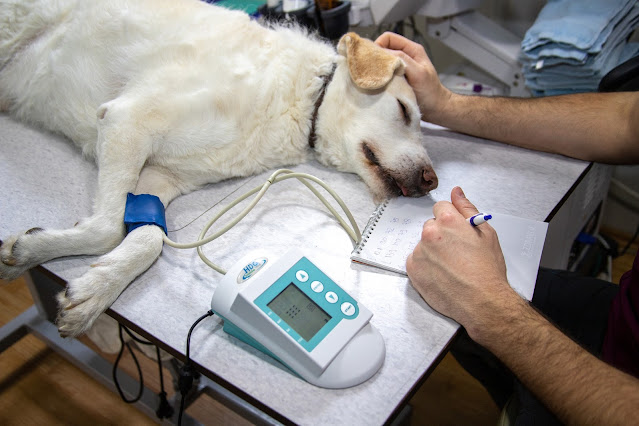Canine Bloat
What is Canine Bloat?
Bloat refers to the bloating of the stomach. Essentially it is a
build up of gas in the stomach which is unable to be released. Bloat with
Gastric Dilatation-Volvulus (GDV)occurs when the stomach fills with gas and
twists 180 to 360 degrees on it's axis between the esophagus and duodenum or the entrance and exit parts of the
stomach.
Bloat is a very serious problem in large breed dogs. When
combined with the
complications of GDV, bloat is a leading cause of death of dogs,
second only to cancer.The exact cause of bloat is still unknown. Generally, it
is believed that excessive eating and drinking of water followed by exercise
can cause bloat.
It is thought that exercise causes food or fluid in the stomach
to cause a build up of gas. The severity of the conditions is more serious when
the stomach twists upon itself within the abdomen in a clockwise rotation
causing the inlet and outlet of the stomach as well as blood vessels which
supply the stomach to become constricted at both ends.
As a result, the constriction will cause the stomach tissue to
die. In a very short time, the stomach becomes restricted of nutrients and
oxygen. If not treated, the dog can die.
What Are the Symptoms of Canine Bloat?
Anxious, restless
Distended abdomen
Attempting to vomit
Excessive drooling
Whining
Pale gums
Increase in heart rate.
Difficult breathing
What Causes Bloat?
The stomach becomes filled with gas and because of several
possible factors; the dog is unable to relieve the pressure. Bloat, with GDV, is
when the stomach goes in to a twist.This closes both the esophagus and pylorus,
preventing the dog from relieving the gas pressure which can quickly build up
after a large meal. This condition is extremely fatal, causing shock, coma and
eventually death. Like many other conditions which affect our dogs, the actual
cause of bloat is still unknown.
Several factor seem to contribute
to a dogs chances of getting bloat
Stress
Eating or drinking too fast.
Exercise before and immediately after eating
Having a large deep chest
Elevated food bowls
Hereditary
Disposition
Are All Dogs At Risk of Cannine
Bloat?
Canine bloat and GDV usually only effects large breed dogs, but
smaller dogs are still susceptible.It is thought that some lines of breeds are
genetically at a higher risk.Though bloat can occur in puppies, it is a
condition which usually occurs in adult dogs.Furthermore, male dogs are more
likely to suffer from bloat than female dogs.
Here is a list of some breeds that have a higher chance of being
effected by bloat and GDV.
German Shepherd
Great Dane
Standard Poodle
Rottweiler
Akita
Bloodhound
Great Pyrenees
Irish Setter
Old English Sheepdog
Boxer
Golden Retriever
Irish Wolfhound
St. Bernards
Labrador Retriever
Newfoundland
Doberman
What Is the Treatment for Dog Bloat?
Canine Bloat
Canine bloat is a very serious problem. If you suspect your dog
of having bloat,contact your vet immediately. Every second counts! If caught
and diagnosed quick enough, initial treatment will involve inserting a tube or
tochar in to the stomach wall to remove the gas. If necessary, the vet will
then operate, attempting to untwist the stomach. Secondary treatment will
involve treating shock, dehydration, fatigue, and other complications resulting
from the distension of the stomach.
Prevention of bloat can be difficult. Because there are so many
possible causes for this condition, prevention must be examined on an individual
basis. If you have a dog that is at risk there are a couple of things that you
can do to decrease the chances of this fatal condition. Since bloat is believed
to be connected with genetics and hereditary,these preventive measures can only
decrease the chances of bloat.
Do not overfeed.
Feed 2-3 small meals a day.
Do not use elevated food bowls
Do not allow your dog to drink large amounts of water after
eating.
Add an enzyme product to your dogs food
Keep emergency veterinary contact handy
Gastropexy surgery
Consult your veterinarian for more
information about Canine Bloat and GDV and its prevention.





very informative!
ReplyDelete